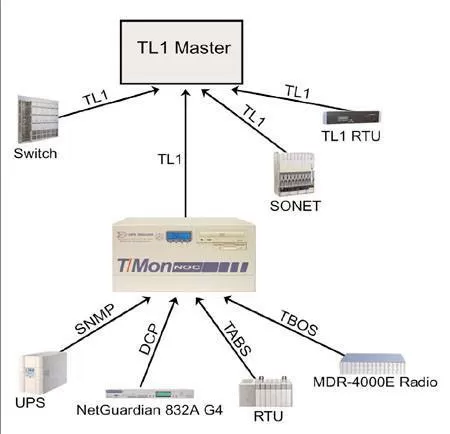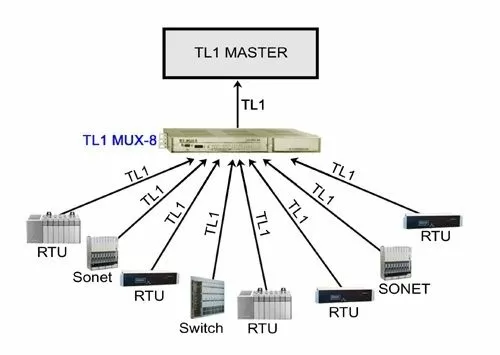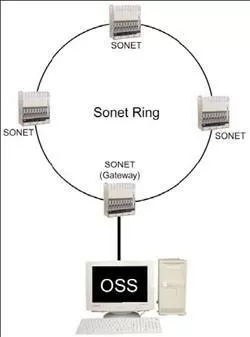Download our free Monitoring Fundamentals Tutorial.
An introduction to Monitoring Fundamentals strictly from the perspective of telecom network alarm management.
1-800-693-0351
Have a specific question? Ask our team of expert engineers and get a specific answer!
Sign up for the next DPS Factory Training!

Whether you're new to our equipment or you've used it for years, DPS factory training is the best way to get more from your monitoring.
Reserve Your Seat Today
You probably still have a sizeable investment in TL1, even though it's considered a legacy protocol. Your valuable gear, especially SONET and legacy equipment, depends on your TL1 knowledge.
This Essential TL1 Guide provides fundamental information in a quick summary format. It allows you to spend your valuable time managing revenue-generating infrastructure.
TL1 is a one of the most widely used telecom network management protocols. Although it is considered today to be a legacy protocol, a TL1 is still an important tool in the monitoring field because of its popularity among SONET, legacy, and other network elements.
This doesn't mean that you have to be a TL1 expert, but you must have a core working knowledge of the protocol to know what you can expect from TL1 telemetry reporting. And if your staff is telling you what can and can't be done with your TL1 monitoring system, you must be able to assess their accuracy.
This white paper is not a complete reference guide to TL1 protocol. Instead, it is a guide to essential fundamentals, providing the information you need in a quick format.
Although TL1 messages may look intimidating to new users, commonly used messages include several clearly defined elements that are separated by colons:
verb [-modifier [-modifier]]::TID:AID:CTAG:generalblock;
The first section of this message is structured in the following way:
verb [-modifier [-modifier]]:
Verb
The verb refers to the type of action to be taken by the network element (in case of a command message) or the type of event that has occurred in the element (in case of an autonomous message).
(Ex. "ACT","RTRV")
Modifiers
When they are used, Modifier 1 and Modifier 2 are used to identify and describe the object in the network element that the message will act on. Modifiers commonly refer to equipment type.
(Ex. "RTRV-ALM-ALL","RTRV-ALM-T1")
The Semicolon - Terminator - ;
A semicolon signifies the end of a TL1 message.
The Colon - Separator - :
Colons are used to separate the data "fields" in a TL1 message.
The Comma - Divider and Placeholder - ,
Commas are used to divide message arguments and to hold the place of omitted arguments.
Hypothetical arguments A through E must be separated by commas - :A,B,C,D,E;
Arguments may simply be omitted from the end - :A,B;
Any gaps in the arguments require commas used as placeholders - :,B,,,E;
The DPS TL1 MUX-8 combines eight incoming TL1 streams into a single stream of data, allowing you to connect 8 physical ports to a single port on your TL1 master. This prevents simultaneous TL1 messages from "colliding" and becoming unreadable.

If you are primarily using a TL1 master, you understand the difficulties of monitoring devices that communicate in other protocols. To maintain adequate visibility, you have to run multiple masters simultaneously, which means more screens to watch, more interfaces to learn, and a significant risk that you'll miss a critical alarm.
T/Mon provides the solution, offering you the capability to collect alarms in over 25 protocols and mediate them to your existing master as TL1 messages. Alternatively, since T/Mon can also interpret TL1 messages from network elements, you have the option of replacing your TL1 master with T/Mon and using it as your top-level monitoring platform. To learn more about T/Mon NOC, visit http://www.dpstelecom.com/tmon
For Additional Information
This guide provides an introduction to the basics of TL1 protocol. For additional information concerning TL1 please refer to the following Telcordia documents:
Determining your alarm monitoring needs can be tough. If you've got a busy job with a lot of responsibilities, you don't have a lot time to evaluate alarm systems and survey your remote sites.
So why not get help from experts you can trust? DPS Telecom will help you survey your remote sites step-by step, making sure you don't miss any opportunities to make your network monitoring simpler, more effective - and easier on your budget.
A DPS expert consultant can help your figure out what alarm system will most effectively meet your needs without overloading your budget. Our goal is to help you maximize your return on investment while minimizing your expenditure - withoutpressuring you to buy a particular system.
There's no hard-sell sales tactics. No harassing sales calls. No pressure to buy. We won't discuss specific equipment options until we've helped you plan the right monitoring strategy for your network.
One potentially significant TL1 challenge is the high bandwidth required for transmission of ASCII text. This becomes an issue if your are reporting over slower transports like dialup or 1200 baud.
TL1 can also create issues for users because it is very structured. Any deviation in the command message will result in an error. Using an automated TL1 interface for day-to-day tasks will eliminate typing errors and increase your efficiency.
For the times you need to use the command line, you can decrease time spent retyping commands by becoming familiar with the most common TL1 message types, described earlier. The better you know your message formats, the fewer mistakes you will make.
Although it is useful to understand the command-line foundation of TL1, it's best to use a high-quality alarm master for day-to-day monitoring and control activities. It's much more convenient and much less frustrating to use an interface that automates the process of sending commands and displays alarms in a standard format. You'll also benefit from the advanced capabilities integrated into a master.
The TL1 MUX-8 watches for the semicolon terminator at the end of each TL1 message. If the single stream is currently available, the message is forwarded to your TL1 master instantly. If the single stream is busy sending messages from another port, any other simultaneous messages are stored in the 256K buffer. Stored messages are sent to your master, in the order received by the MUX-8, at the next available opportunity.


SONET devices are some of the most commonly deployed TL1 network elements today. The special architecture of a SONET ring offers added benefits for TL1 monitoring
A SONET ring must be connected to the TL1 OSS through only one device on the ring (known as the "Gateway"). Whenever the gateway network element receives a TL1 message, it uses the TID to route the message to the appropriate network element.
In this way, you can reach all of the devices on a SONET ring by connecting to only one.

Learn network alarm monitoring in-depth in a totally practical hands-on class. The DPS Telecom Factory Training Event will show you how to make your alarm monitoring easier and more effective. You'll learn SNMP alarm monitoring, ASCII alarm processing (a tool for parsing TL1 messages), derived alarms and controls, and how to configure automatic email and pager notifications. DPS training is the easiest way to learn alarm monitoring, taught by technicians who have installed hundreds of successful alarm monitoring
deployments.
"DPS Factory Training is a big help in not feeling intimidated by your network monitoring system. It's excellent - presented in the right way and tailored to the needs of the class."
- Bill Speck, 3 Rivers Telephone
"ASCII and TL1 commands... [were] presented very well, making the introduction to a new language enjoyable!"
- Dewayne Hamilton, Level 3 Communications
"[DPS Factory Training] really was the best training class I've been to in my telecom career."
- Mary Steffen, National Grid
For dates and registration information, call 1-800-693-3314 today or go to www.dpstelecom.com/training
This TL1 guide wasn't written for students taking a computer-engineering class. There are enough textbooks already.
I wrote this guide for you - a busy professional. You need to know the fundamentals of TL1 to make it work in your network, and you need to learn that quickly.
Where other guides are longwinded and unbearably complex, this one is simple to read and understand. Most people can read through it in about 30 minutes. The knowledge you gain should then enable you to tinker a bit with TL1 and become proficient in a few days or weeks.
If you ever have any TL1 question that this guide can't answer, all you need to do is call me: 559-454-1600.